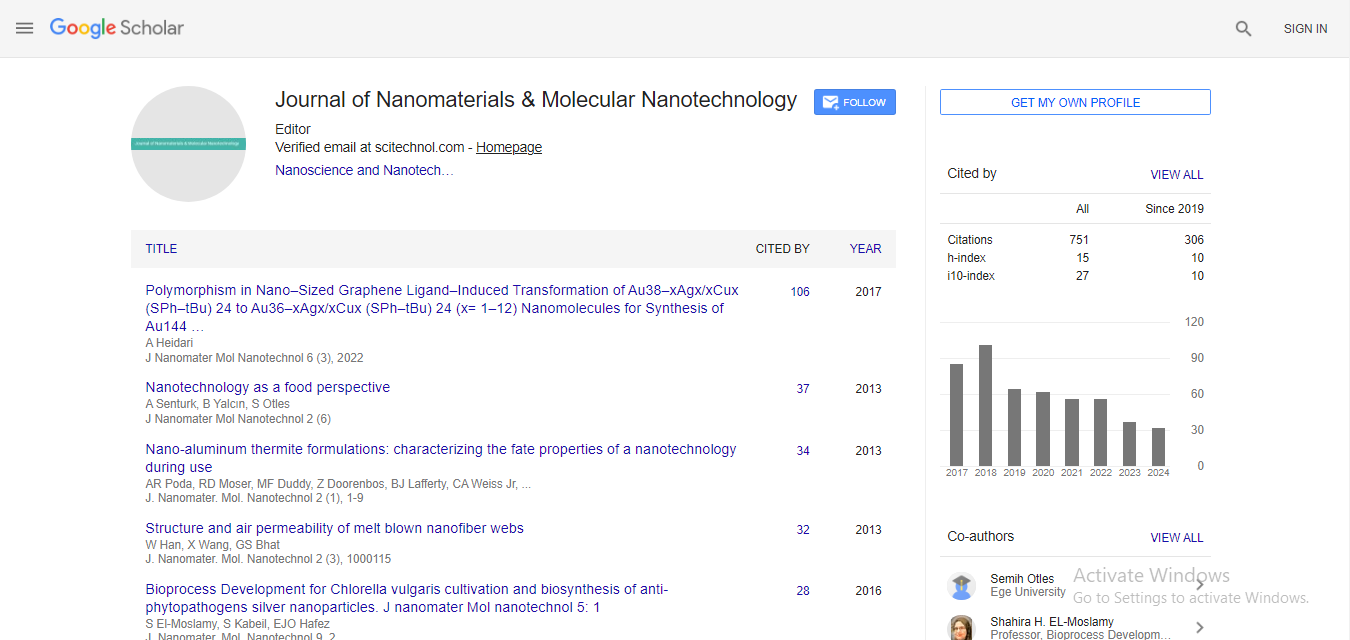Nanozyme mediated sensors for biomolecules detection
Pabudi Weerathunge
RMIT University, Australia
: J Nanomater Mol Nanotechnol
Abstract
Nanozyme is a well-established term which used to demonstrate nanomaterials with enzyme-like activity. Up to date several metal, metal oxide, metal sulphide, metal halide and carbon-based derivates were reported for their intrinsic peroxidase, oxidase, catalase and superoxide dismutase equivalent activities. The discovery of this nanozyme activity enables to craft an alternative colorimetric approach for biomolecules detection. The color change which originated as a result of nanozyme activity is independent from aggregation of nanomaterials and changed as a function of existing biomolecule concentration. However, most of these nanozyme utilized colorimetric sensors are centered on non-specific glucose and hydrogen peroxide (H2O2) due to lack of efficient Molecular Recognition Element (MRE). Thus our research group focused on elaborating the practical applicability of this nanozyme mediated colorimetric approach for specific biomolecules detection by using single standard DNA (known as aptamers) and proteins. The combination nanozymes with the abovementioned MRE able to deliver an ultra-fast, highly specific and sensitive colorimetric approach which enable detection of small molecules existing as food contaminants (kanamycin) and environmental pesticide (acetamiprid) as well as whole cells which include bacteria (Staphylococcus aureus), virus (norovirus) and mammalian cells (brain cancer cells). The promising results obtained during these research efforts further highlighted the successful transformation of this concept as a viable technique for development of point of care devices.
Biography
Email: s3426153@student.rmit.edu.au
 Spanish
Spanish  Chinese
Chinese  Russian
Russian  German
German  French
French  Japanese
Japanese  Portuguese
Portuguese  Hindi
Hindi 



